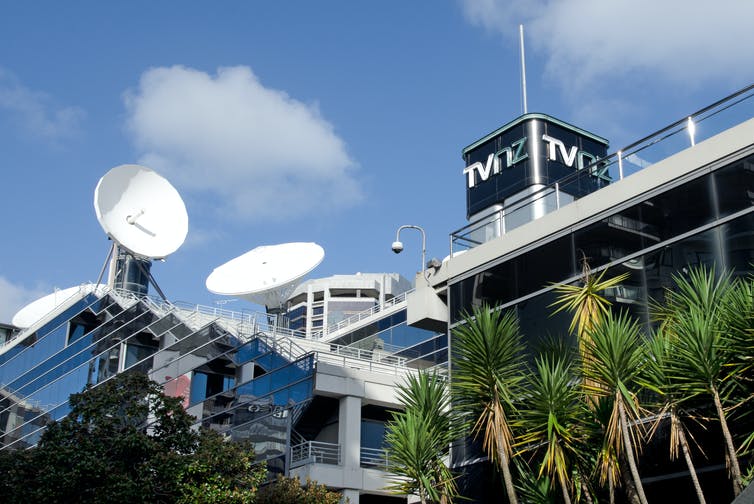OPINION
Sarah Baker
Associate Professor, Communication Studies, Auckland University of Technology
The imminent demise of TVNZ’s Sunday program demonstrates the TV current affairs genre in New Zealand is on its last legs. The death knell was sounded back in 2015 when TV3 axed its nightly Campbell Live program, but this latest cut appears to spell the end.
Coupled with the earlier announcement that Warner Bros. Discovery will be shutting down its Newshub operation in June, the end of Sunday also represents a turning point for New Zealand’s broadcast media.
While it could be argued Sunday has not been as hard-hitting as past TV current affairs programs, these terminal signs still matter. All up, the proposals mean 20 hours of news and current affairs television per week will go from local screens.
In particular, long-form television current affairs has been a vital part of the overall broadcast news menu. It has allowed deeper analysis of events and issues, and often made news in the process. Its disappearance is a watershed moment in New Zealand media.
The birth of TV current affairs
The origins of long-form TV current affairs can be traced to Britain in 1953, when the BBC launched Panorama. Within a few years, the show was tackling the 1956 Suez crisis, setting the tone for stories of national and international importance.
Interviews would take time, and context was given in complex stories. It was all part of the BBC’s public service broadcasting remit, set out in its charter, to “inform, educate and entertain”.
Panorama was joined by other programs – notably ITV’s World in Action and Channel 4’s Dispatches – which established the form and function of TV current affairs.
Such programs helped audiences understand current events, and often held politicians and the powerful to account. To take just one example, World In Action’s investigations in the 1980s helped expose what happened to the so-called Birmingham Six, one of the UK’s worst miscarriages of justice.
60 years of investigations
TV current affairs arrived in New Zealand with Compass in 1963, not long after the still-running Four Corners debuted on the Australian Broadcasting Corporation in 1961. Compass was followed by Gallery in 1968.
This was the beginning of rigorous political interviews. These programs provided the opportunity for New Zealand stories to be told and seen from a New Zealand perspective.
By the 1970s, the local TV current affairs roster was well established, often dealing with controversial issues such as police brutality, industrial disputes and antiwar protests. The roster was later fleshed out with shows such as Foreign Correspondent and Eyewitness.
From the late 1980s, however, New Zealand broadcasting was progressively deregulated and commercialised. TVNZ became a “state-owned enterprise”, directed to run like a business and turn a profit. Ultimately, a program’s success relied not only ratings, but also on whether it earned more than it cost to make.
The commercial era saw the rise of a new kind of personality-driven TV current affairs: the nightly Holmes show and the weekly 60 Minutes and 20/20 (local versions of international franchises).
Critics viewed the trend towards softer and often tabloid material as representing a wholesale loss in quality. But quality long-form current affairs still survived in the form of Frontline and its successor, Assignment.
That era lasted into the early 2000s. Sunday picked up the long-form mantle in 2002, replacing the local version of 60 Minutes.
New model needed
As broadcasting grew more commercial, research has shown coverage of more serious subjects declined. At the same time, “infotainment”, human interest, celebrity and entertainment news increased.
But free-to-air broadcasting has been operating under economic constraint for decades now. With its advertising model broken by the digital economy, and viewers migrating to streaming services, expensive long-form current affairs formats have been harder to justify financially.
Public funding for current affairs, mostly via NZ On Air, has supported Maori and Pacific-focused programs The Hui (TV3) and Tagata Pasifika (TVNZ), as well as weekend interview show Q+A (TVNZ).
The Hui, in particular, has investigated important issues such as abuse in state care. But with its fortunes tied to Newshub’s, the show’s future is also uncertain.
While the economics of TV current affairs are changing rapidly, the kinds of issues needing coverage are more urgent than ever – climate change and the impact of artificial intelligence, to name just two.
According to TVNZ, closing Sunday is still only a proposal. If there is any room for negotiation, then, the broadcaster should seriously consider any viable alternative.
One option might be to retain a core team of investigative journalists and to develop a new model to deliver their stories, perhaps online and through the TVNZ+ digital platform. Because to lose what remains of TV current affairs will be a serious loss to journalism and to New Zealand.
This article is republished from The Conversation under a Creative Commons license. Read the original article.

